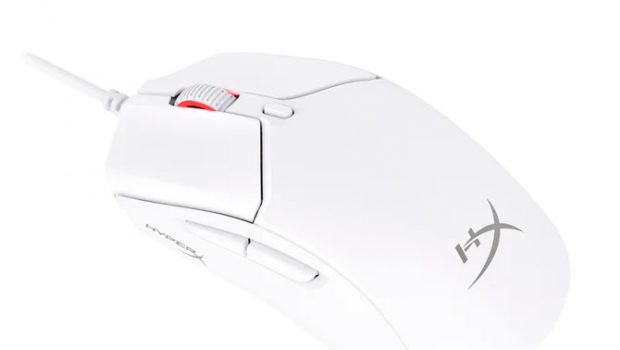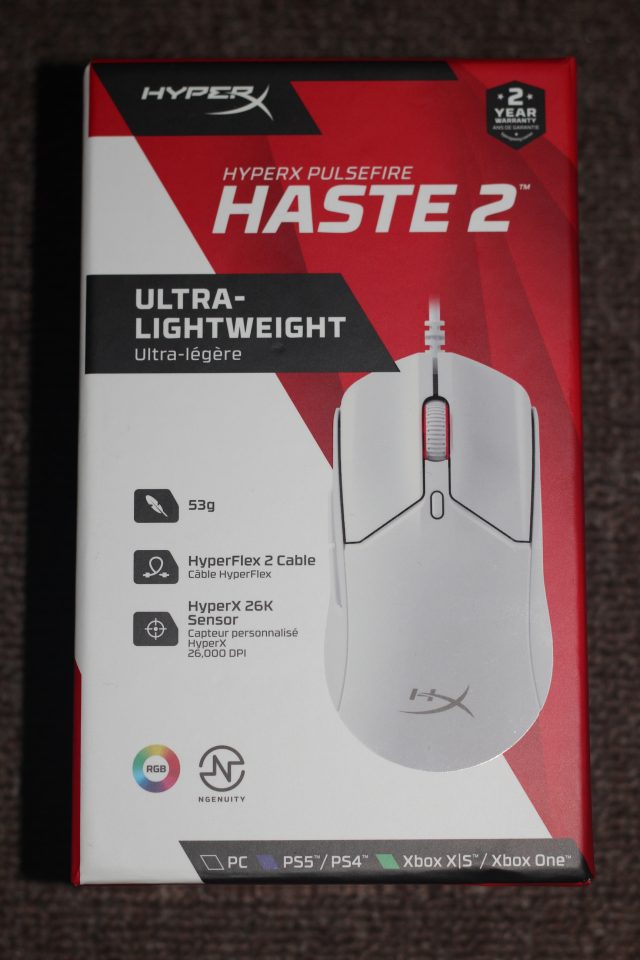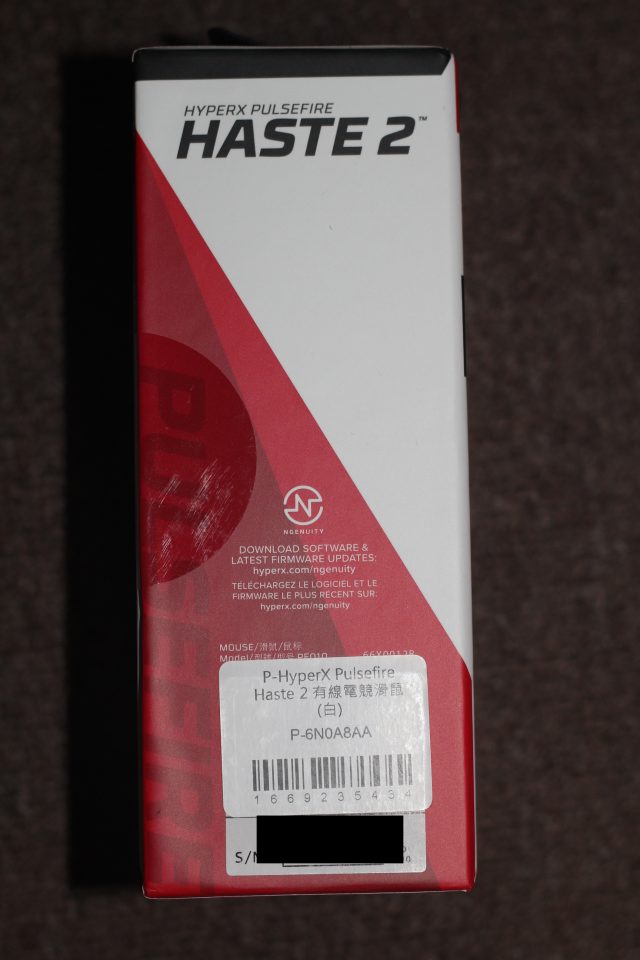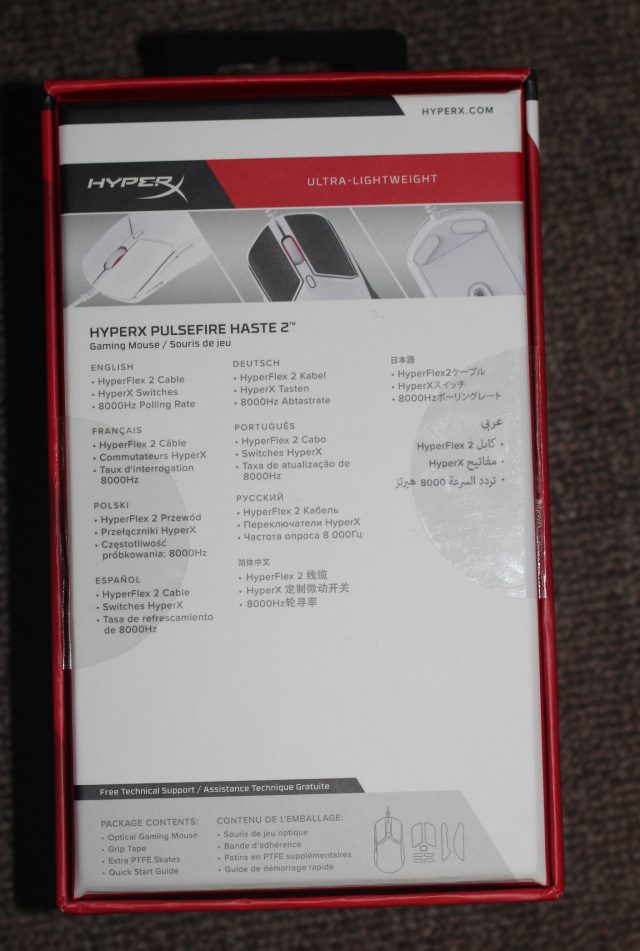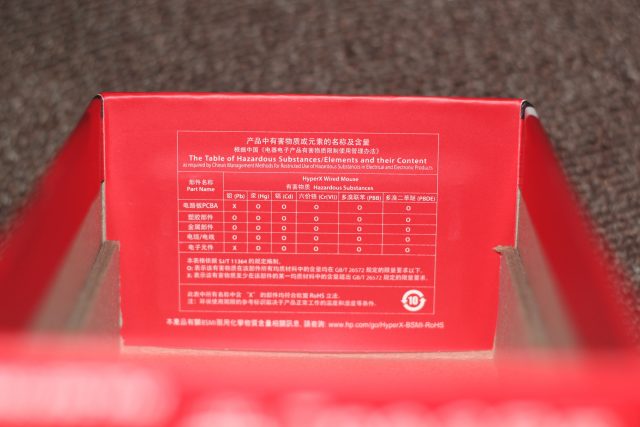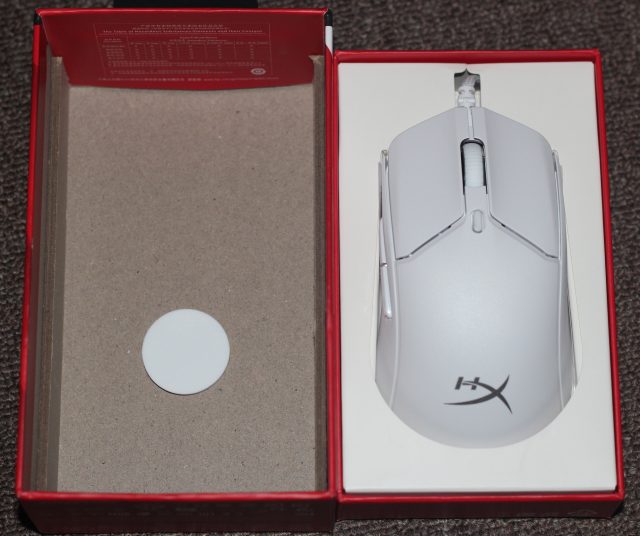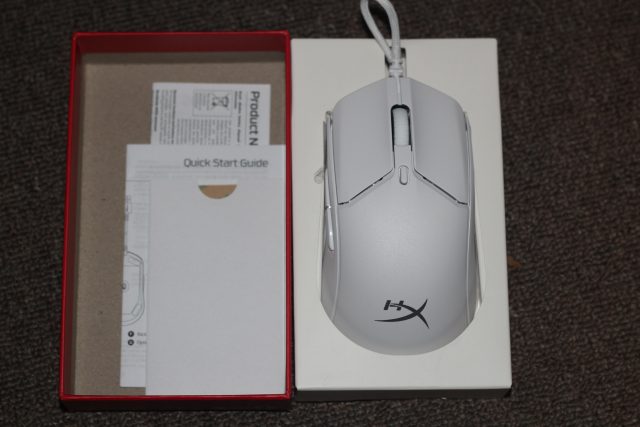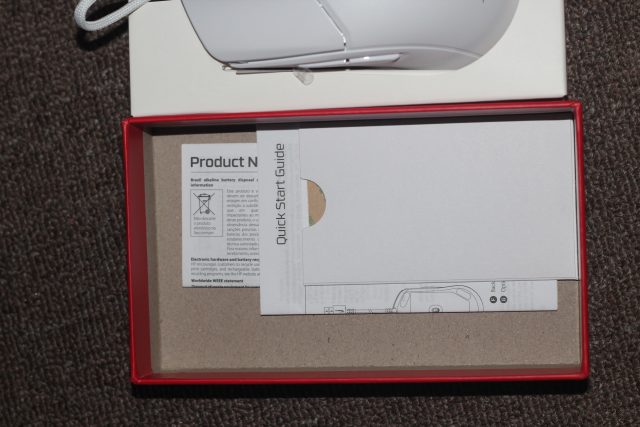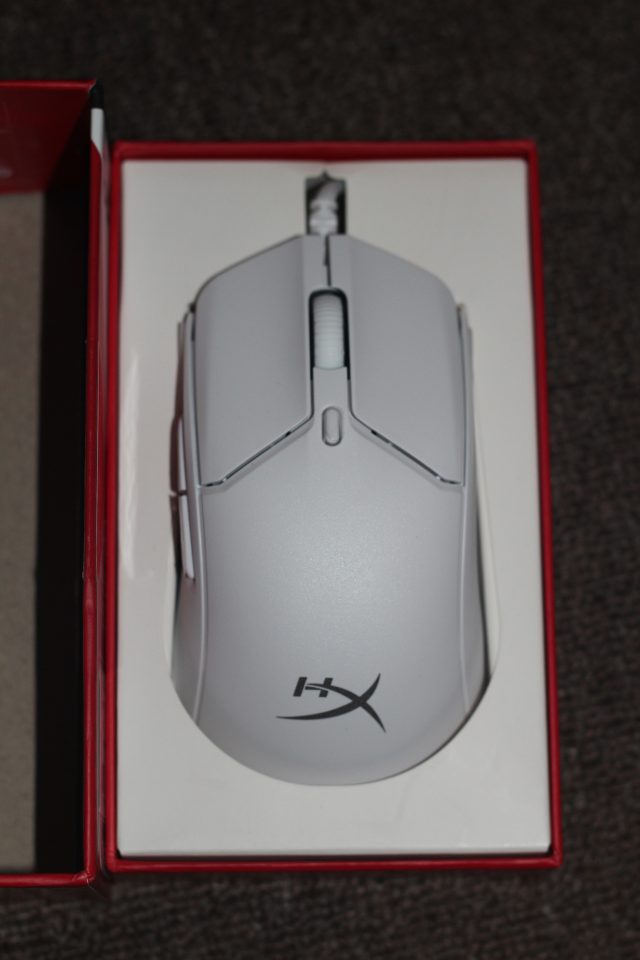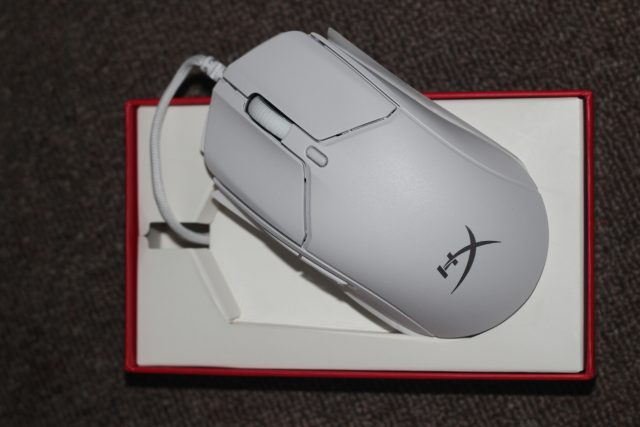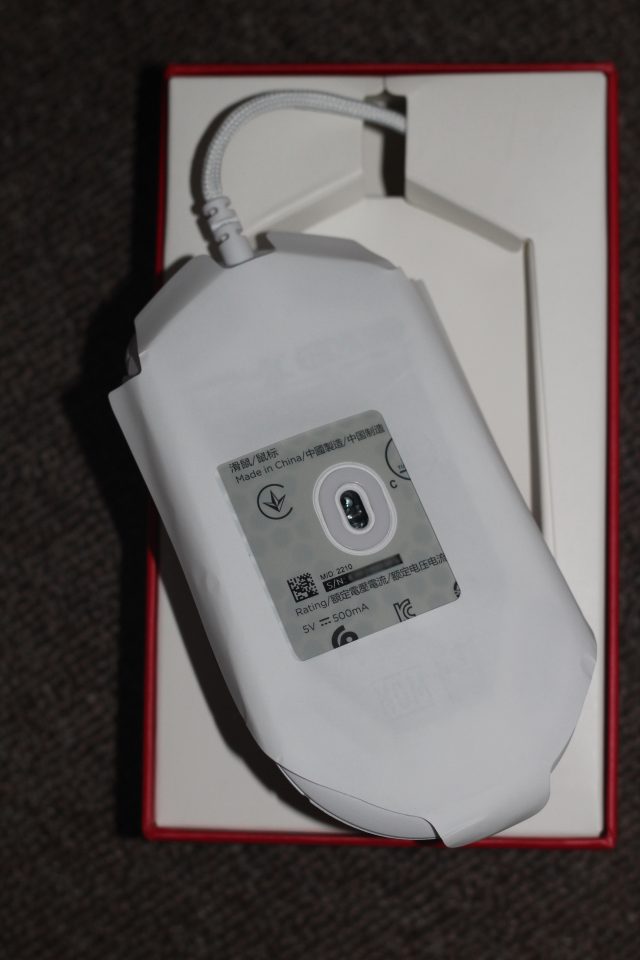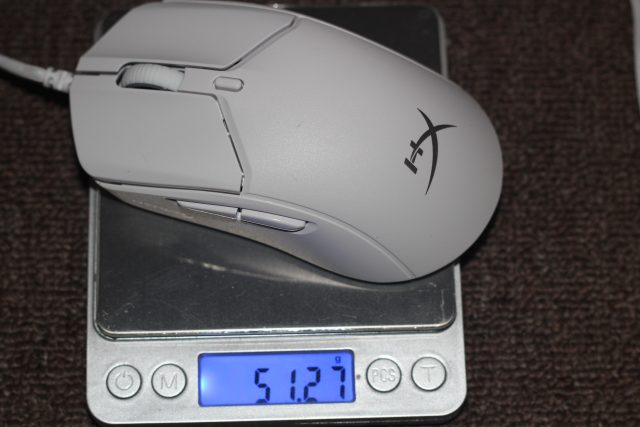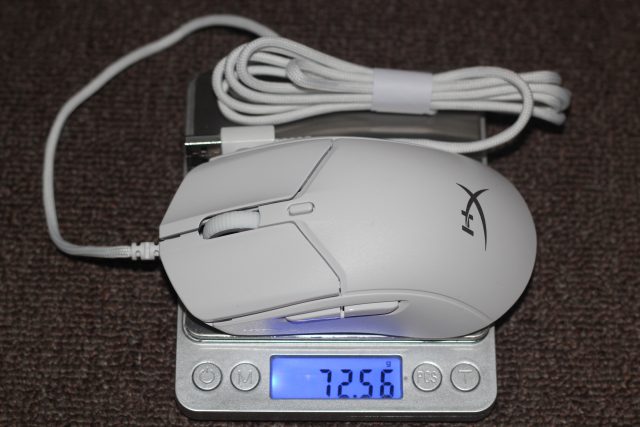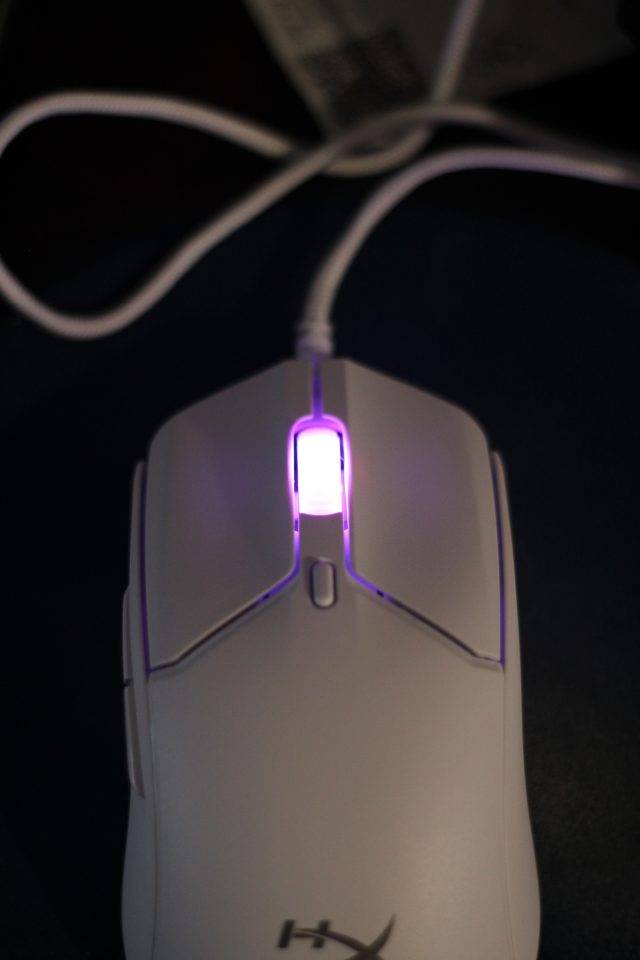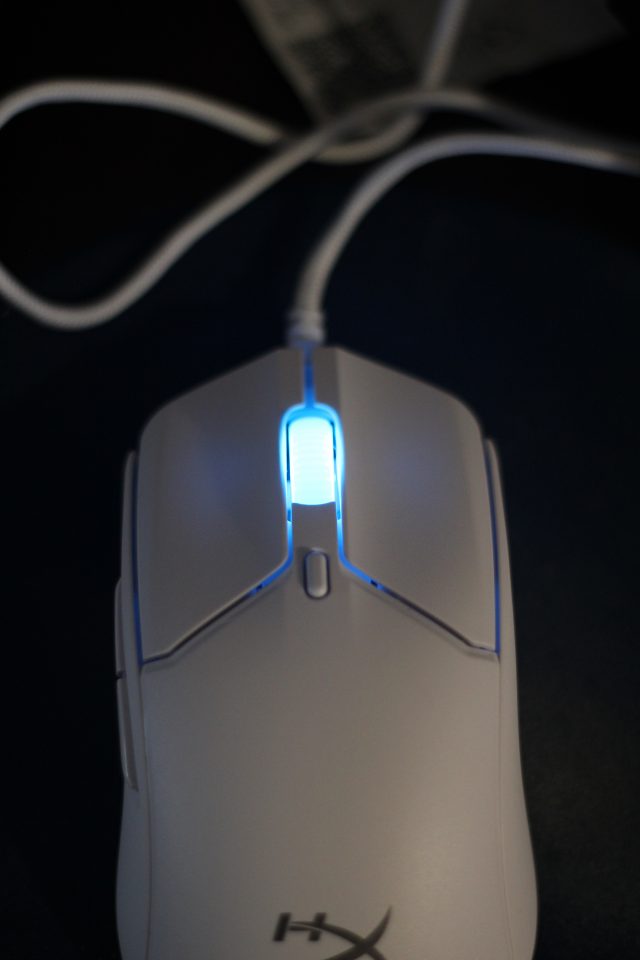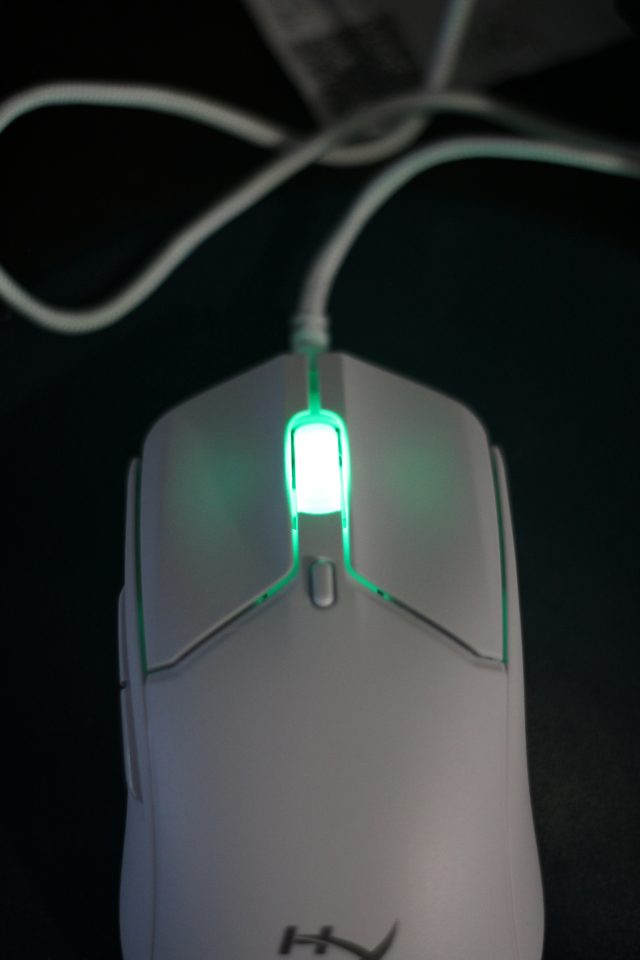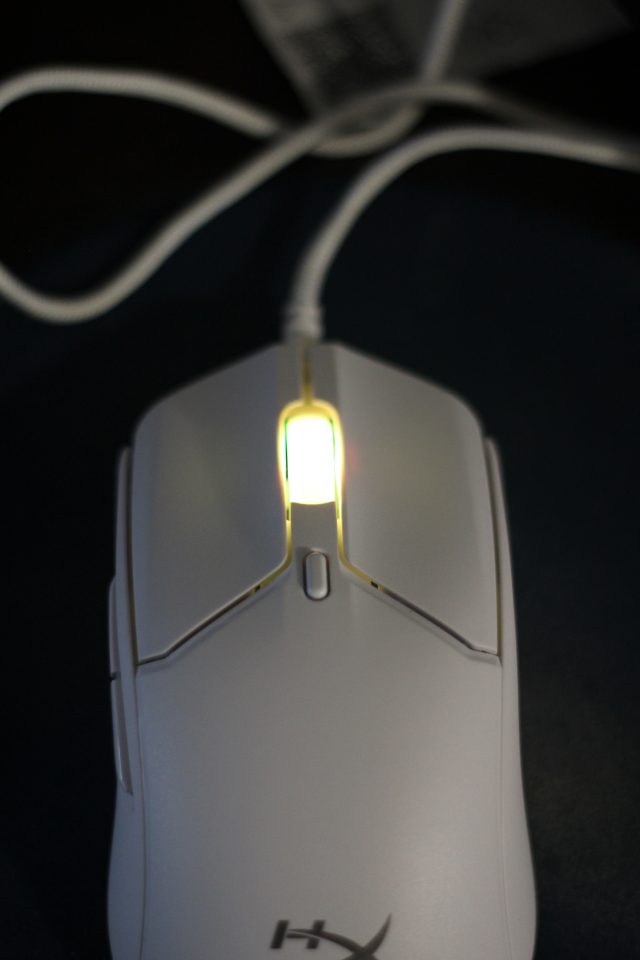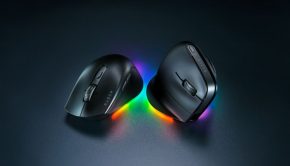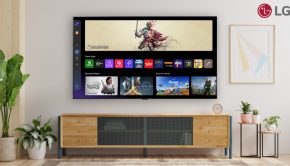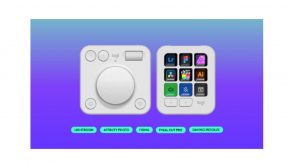HyperX Pulsefire Haste 2 Gaming Mouse Review @HyperX
HyperX Pulsefire Haste now has a new evolution, the Haste 2 sports a newer and faster processor which is capable of 26,000 DPI and 8000Hz polling rate.
Before you read any further, if you are not already familiar with the HyperX Pulsefire Haste, take a moment to read our review so you can better appreciate the gravity of the advancement in the Haste 2.
Unboxing and Inclusions
The box design is stylish and similar to the previous models, but this time far less plastic and better packaging design overall. Inside is the usual paperwork including the guide for the grips and PTFE replacement pads.
The included button grips are black, which might be preferable for some, yet you would expect them to be white. They feel great but for testing they were not used as was the preference.
The underside of the mouse has a sticker over the vent holes, but it is intended to remain in place as it contains the serial number and compliance information.
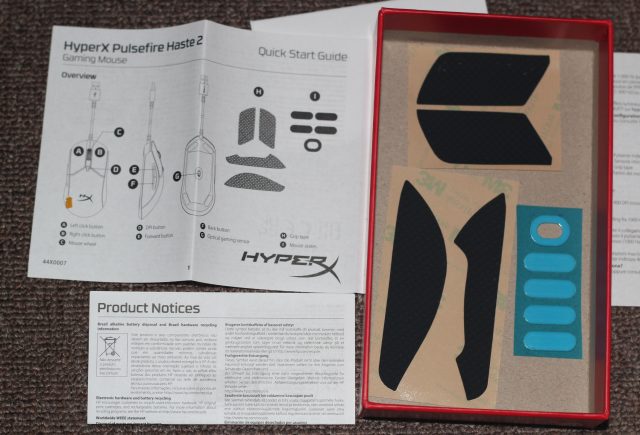
Included are button and side finger grips and replacement PTFE feet/pads. There is no rules here, you can put a grip on one button or side or in any combination you want. But black on a white mouse, may not be too appealing. Dealers choice here.
Again a welcome sight is a rather long ~2m, high quality sheathed, flexible cable.
Design
Physical design and comparison
The design is almost identical to the first Haste, but there are some subtle differences.
| Haste 2 | Haste | |
| Scroll wheel (movement) | Firmer, more resistance notched actions | Silky smooth low resistance notched actions** |
| Primary button size/shape | Larger, wrapping around the front of the scroll wheel | Click buttons are separated at the front by solid bezel, wider bezel below the scroll wheel and primary buttons |
The change to the button size makes no difference in the practical use, but it does make the buttons look and feel a bit bigger. In actual sense, it lets the light of the RGB shine through more and form trace background lighting through the bezel. It also means less plastic is used which is better for everyone and helps keep the weight down.
Comparing the scroll wheel from a solid black material to a fully transparent wheel, the latter should appeal to most gamers and acts as a really nice beacon to find the mouse during the late night fridge-run in the darkness. The firmer resistance of this new Haste 2 may just be a product of the wheel and sensor being new, differences in factory runs or a clear design change. Without taking two perfectly working mice apart, it would be speculation – but it does feel like the diameter of the scroll wheels are just a tiny bit different.
The sensor
It is the new sensor in the Haste 2 that changes the game (pun intended) here.
| Haste 2
HyperX 26k |
Haste
Pixart PAW3335 |
|
| Resolution | 26000 DPI | 1600 DPI |
| Speed | 650 IPS | 450 IPS |
| Polling Rate | 8000Hz | 1000Hz |
The 1000 DPI increase in resolution makes the precision of this mouse more accurate, which translates well on very high resolutions. Whether it be for pin-point accuracy in a first-person shooter or in your 3D modelling and CAD endeavours, this kind of increase has some serious advantages.
Translations of movements to your PC at 650 IPS and 8K polling rate, that is insane. You are pushing movement data to your PC once every 125 microseconds, or 8 per millisecond or you guessed it 8,000 signals a second. In terms of the combinations you can achieve, you would be able to increase or reduce the accuracy and precision by adjusting the settings to your liking using the Windows HyperX software.
Is this all marketing wank? Yes! But why can’t it be both? Okay, so the hardcore nerds and electronics enthusiasts will be saying that the crystal oscillator onboard may not be exactly 8000Hz, maybe your USB bus is limiting the bus power or some bandwidth in favour of other devices, maybe some other factors that lower the clock, mean you never truly get the highest signalling possible? Sure, all these things can be so, but consider that the increased 650 DPI speed of the sensor means that at any lower DPI resolutions such as the comfort zone 1600, you are getting a higher precision than in the previous HyperX Pulsefire Haste.
This sensor is capable of interpreting, processing and sending movement and button signals to your computer up to two times faster than the average person is capable of reacting to the game stimulus. In fact, the mouse would react faster than your conscious brain can register that the mouse interaction is complete. A sobering thought, when we see technology is advancing and signalling latency is reducing. Maybe a competitive edge could be achieved with additional training, but we are talking about 10-50ms and you are not going to be able to move your fingers and click fast enough on any mouse within that time.
Performance
Rather than tell you about which game was tested with this mouse, we can simply say that no perceivable difference is noticed between the Haste and Haste 2. This is a good thing. Keep in mind that you wont play all your games at the highest resolution anyway.
The conscious bias at play here suggests that if we think something is better or should be better, we will inherently interpret the experience as such. A much more useful test is something that can be measured.
Utilising the humnanbenchmark.com’s aim test and reaction time tests, we can see the same results across the preset DPI’s for both mice. What is interesting is that for the accuracy test, the DPI preset of 1600 yields around 630ms average response, where as the 3200 DPI increases reaction time to ~730-750ms.
Take the above with a grain of salt, the point here is to highlight that the resultant performance from a single user is the same for both Haste and Haste 2.
Click speed tests are useful to determine if the Haste 2 outperforms the Haste. For this test, several passes on both mice were performed to achieve the best score possible.
| Clicks Per Minute | Haste 2 | Haste |
| Average Score | 6.6 CPS (33 clicks) | 6.4 CPS (32 Clicks) |
| Highest Score | 6.8 CPS (34 clicks) | 6.8 CPS (34 clicks) |
With several tests performed on each mouse, we can clearly see that with enough practice the score can be improved. But no amount of practice here revealed a hard-limit for either mouse. The limiting factor is not the chipset or mechanical switch on either mouse, but in fact the operator.
Conclusion
The HyperX Pulsefire Haste 2 is an outstanding mouse that will not under any circumstance disappoint.
Many are quick to suggest that a mouse is a mouse, that cheap imports with the same chipset(s) are more or less the same and there is little argument to buy a well known brand gaming mouse. What is overlooked in this argument is the level of engineering that goes into the shape design, the PTFE feet for smooth gliding, or the extremely lightweight 2m sheathed cable and lightweight body that reduce drag and operator fatigue.
Not all gaming mice come with software to fine-tune the DPS to your liking, nor will they receive firmware updates to address future bugs or enhance performance. And from a security perspective, not all cheap import mice should be considered safe either – although that is another discussion entirely.
It now comes down to the human-factor of the individual to rise to the challenge to meet the performance enhancement of this new generation of gaming mice.
If you are in the market for a new gaming mouse, then the HyperX Pulsefire Haste 2 offers great value, especially at the current release price. Although go with black if you want matching grips colours if that is important to you.
Summary: HyperX Pulsefire Haste 2 will out-perform the human element. No real-world perceivable gains over the previous Haste, but does offer exceptional value if buying a new mouse.


